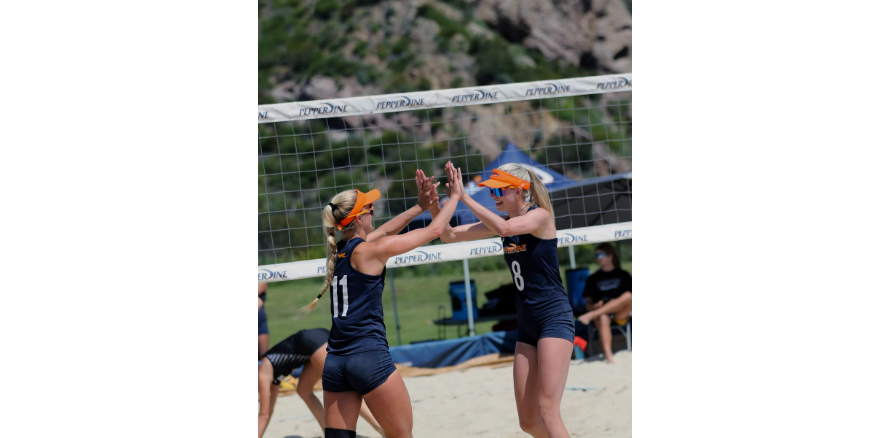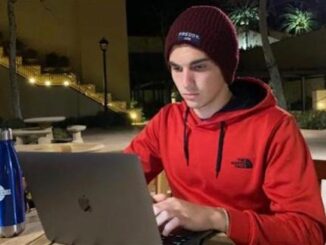
Many Pepperdine students have the false belief that student-athletes are here on full-ride scholarships.
The truth is, most athletes are either playing their sport on a partial scholarship or receive nothing at all.
Even teams that draw in large audiences such as basketball, baseball and soccer do not give most of their athletes a full-ride scholarship, Athletic Director Steve Potts said.
Women’s Swim and Dive and Women’s Track and Cross Country are the two sports that do not receive any athletic scholarships.
“I hope they feel like by the end of their time here that it was all worth it to them, and that’s important to me,” Potts said.
Athletes said they remain devoted to their sport by leaning on their faith and the Pepperdine community throughout the highs and lows.
How athletic scholarships are divided amongst teams
Not all sports teams at Pepperdine have the same rules for how coaches award scholarships to their athletes.
There are two different categories of sports teams that receive scholarships in the NCAA: headcount sports and equivalency sports. Headcount sports have a set number of scholarships that have to each be given to one athlete in full, while equivalency sports have a set number of scholarships that can be divided between athletes in varying amounts, Brooke Kruhm wrote in a November 2021 Athlete Sports Management article.
Associate Athletics Director Amanda Kurtz said Women’s and Men’s Basketball, Women’s Tennis and Women’s Basketball are headcount sports. The rest of Pepperdine’s athletic teams are equivalency sports.
For example, Kurtz said the Men’s Golf Team has four and a half full scholarships and it is up to the coach to decide how they decide to divide that amongst the seven-member team.
“Bottom line, it’s a coach’s decision on what they think you’re worth, value to the team, what money they have available that year,” Kurtz said.
The baseball team has 11.7 scholarships available to spread out between a roster of roughly 35 athletes. But for women’s tennis, there are eight scholarships available to a roster of eight to 10 athletes. The NCAA sets the maximum number of scholarships allowed for each team.
While the NCAA allows scholarships for Women’s Swim and Dive and Track and Cross Country teams, Pepperdine added these sports late and Potts said the university does not have enough athletic scholarship aid to support these teams.
“There has never been a time where we sit down and decide which sports we should fund the full scholarships for,” Potts said. “This is the way we have done it and we just don’t have the money to fund scholarships for Women’s Swim and Dive and Track and Cross Country.”
Title IX, which was created to promote women’s sports, also requires the university to carefully balance its spending between men and women’s teams.
“It’s a thing most people don’t understand,” Potts said. “If I tell you that we can’t add women’s scholarships because of Title IX, that doesn’t make any sense.”
Kurtz elaborated on the role Title IX plays in athletic funding.
“Title IX is based on enrollment,” Kurtz said. “Pepperdine’s enrollment is about 60% female and 40% male, so for us to be compliant in Title IX our participation numbers need to mirror the larger university.”
Because of this, women receive more scholarship money. Specifically, men receive $3,517,566 in athletically related student aid and women receive $4,645,941, according to the Equity in Athletics Data Analysis. There are eight men’s teams and nine women’s teams total at Pepperdine.
The athletic scholarship experience
Kate Clermont, a Beach Volleyball athlete and junior elementary education major, receives an almost full scholarship to play her sport at Pepperdine. Clermont is from Ontario, Canada, and committed to the team after coming for a visit during high school.
“I think a good way of looking at it, for me, is that it’s a job. That I am here for a job,” Clermont said. “It’s not in the way that I think ‘Oh, I have to do this,’ it’s something I am so lucky to be a part of and I have to maintain and keep up with.”
Johnathan Flint, Track and Cross Country athlete and senior finance major, receives a partial scholarship, which means that roughly 25% of his tuition is paid for.
Both Clermont and Flint said that if it weren’t for the athletic scholarships they received, playing their sport at Pepperdine likely would not have been possible for them.
“Personally, I feel like I got more than I deserved, athletically,” Flint said. “So I’ve always been very fortunate to have what I have.”
Flint said there are a lot of things that motivate him as an athlete, but the money is not one of them.
“If I’m hurting during a race, I’m not like ‘if I push through it I can get an extra $10,000,’” Flint said.
No scholarship, no problem
There are athletes across all teams at Pepperdine who don’t receive athletic scholarships.
Brooke Bakken, Women’s Track and Cross Country runner and a junior public relations major, is one of those athletes. Bakken said when she first reached out to the head coach of the Women’s Cross Country team, getting an athletic scholarship hadn’t even crossed her mind. She was surprised when she was almost immediately added to the team.
“It wasn’t even on my radar because I was just so stunned that I was on the team,” Bakken said.
Bakken said she can understand why some athletes may feel it is unfair that some receive scholarships while others do not, but she is just grateful to get to keep running.
Similar to Bakken, Ellie Hendren, Swim and Dive athlete and a senior sustainability major, has remained devoted to her sport despite receiving no athletic scholarships.
“No one on my team gets any scholarships at all,” Hendren said. “It creates a unique environment that everyone on the team is there because they want to be and it bonds us.”
Although Hendren’s dedication to her sport is unwavering, she said there are still days when she thinks having athletic aid would make being a student-athlete easier.
“I think it would be a lot easier on the hard days to motivate yourself,” Hendren said. “Because it is really hard on those days when I don’t want to wake up early for practice.”
It has become easier in recent years for athletes to transfer schools now that they are no longer required to sit out for a year after transferring, according to a 2023 Next College Student Athlete article. If an athlete thinks they are worth more money, then they can enter the transfer portal and find somewhere else that will give them more scholarship money.
“I also just think it’s part of life,” Kurtz said. “Maybe I think I’m worth more money but that’s not what I’m being paid, well then I can go and find a place that will pay me what I think I am worth.”
Faith and community as driving forces of motivation
Most athletes power through the early mornings of practice and late nights of studying for much more than just their athletic scholarship. Pepperdine’s community is what attracts many students to the university and that community can be especially helpful for student athletes.
“I chose to swim here mostly because of the community,” Hendren said. “I could tell that within the Swim and Dive program and athletics in general everyone was close and supportive of each other and I really liked that.”
Faith is also a big source of motivation and a driving reason for why athletes choose Pepperdine. For Flint, it is both the support from his teammates and his faith that motivate him, especially during hard practices or races.
“I have my purer intentions like I have been given a gift from God and I want to use it to honor him,” Flint said. “I also have my more selfish intentions that I want recognition and glory and I want to be really good.”
Similarly, Potts said he places his faith at the forefront of his motivation for serving as the Pepperdine Athletics director. He believes strongly in Pepperdine’s Mission Statement– that students are strengthened for lives of purpose, service and leadership.
“I get excited about combining our mission and integrating it into athletics,” Potts said. “I think we’re a bit unique, and that’s what motivates me everyday.
To Pepperdine students who are not athletes, money may seem like a great motivator. But athletes at Pepperdine said they are doing their sport for something greater than themselves, such as their teammates, coaches, community and God.
“I love being able to help athletes, whether it’s getting them eligible or getting them admitted,” Kurtz said. “And then being able to see them come here and succeed in their sport and graduate is always so rewarding.”
Leah Dixon reported this enterprise story in Jour 241 during the Fall 2023 semester under the supervision of Dr. Christina Littlefield and Dr. Theresa de los Santos. Dr. Littlefield supervised the web article.




